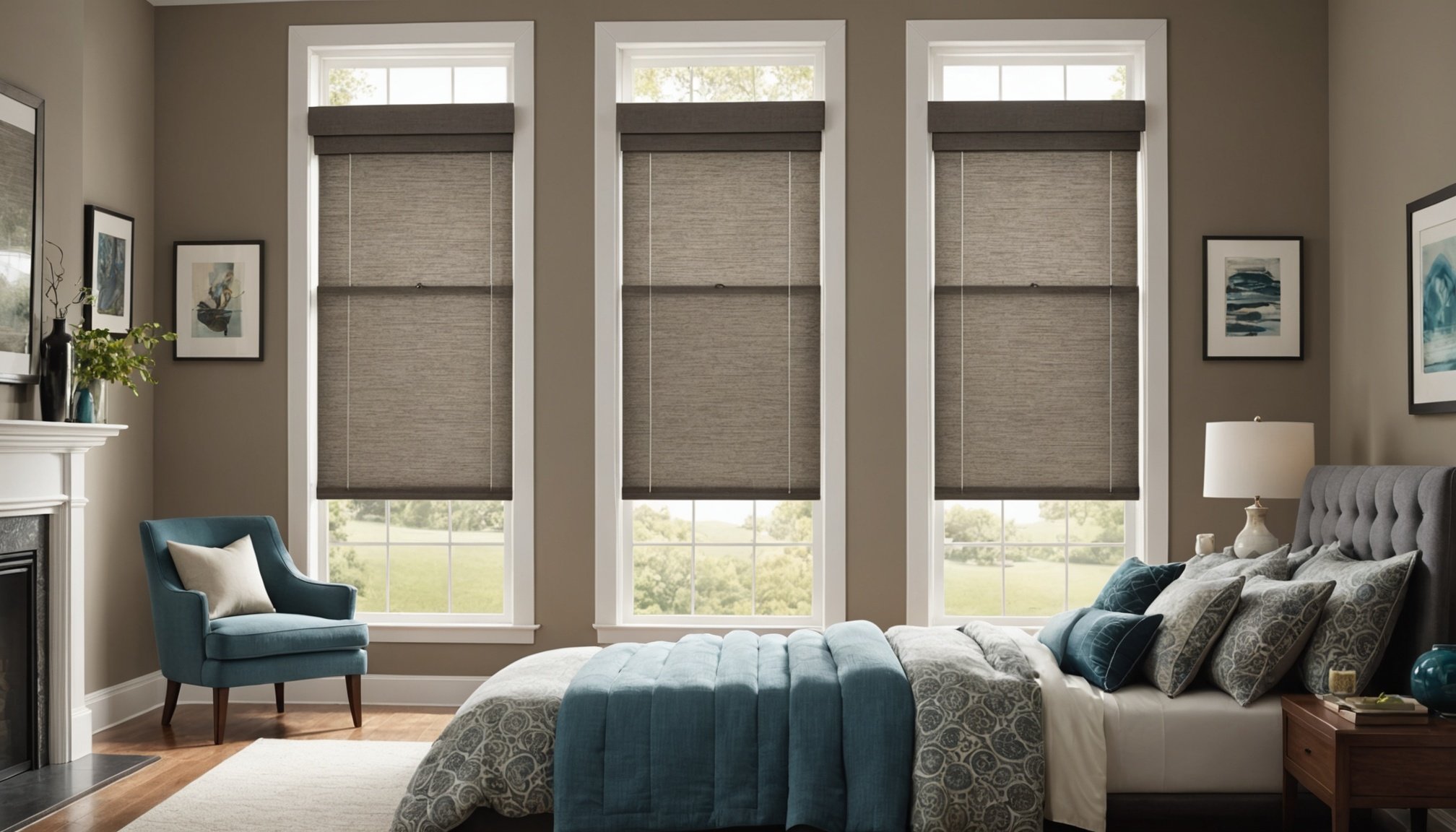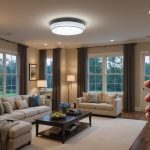Overview of Smart Blinds and Shades
Smart blinds and shades represent a cutting-edge solution for home automation, integrating technology into daily life. These systems are designed to enhance convenience by allowing homeowners to adjust window coverings through smartphone integration. This feature eliminates the need for manual control, making the process as simple as tapping a button on your phone.
Smart blinds and shades operate through various mechanisms, such as motors that open and close the blinds, which can be managed via remote controls or smartphone apps. The innovation extends to remote control shades that offer seamless integration with home automation systems, enhancing user experience by enabling adjustments from anywhere with internet access.
Topic to read : Mastering Pool Management: Innovative Smartphone Techniques for the Modern Smart Homeowner
The importance of smartphone accessibility in smart blinds cannot be overstated. This connectivity is a significant trend, as users demand more from their smart home technology. It allows for scheduled automation, contributing to energy efficiency by opening and closing at optimal times to regulate indoor temperature.
Popular trends in smart window treatments include features like voice control compatibility, solar power options, and integration with other smart home devices, reflecting the ongoing evolution in designing user-centric, functional home innovations.
Have you seen this : Elevate Your Mobile Internet Enjoyment: Ultimate Guide to Optimizing Smartphone Hotspot Settings!
Benefits of Using Smartphone-Controlled Blinds and Shades
Leveraging smartphone-controlled blinds and shades offers the tangible advantage of enhanced comfort. With remote operation, users can adjust their blinds without leaving their seat, a convenience that transforms daily interactions with home environments. This ease of use is particularly beneficial for those with mobility challenges or in multi-story homes where physically adjusting blinds may be cumbersome.
Moreover, these smart blinds significantly contribute to energy efficiency—an important factor for the environmentally conscious. By scheduling blinds to open and close at optimal times, homeowners can effectively regulate indoor temperatures. This automation reduces reliance on heating and cooling systems, ultimately leading to energy conservation and lower utility bills.
Privacy and security also see notable improvement through this technology. By controlling the blinds remotely, homeowners can create an illusion of presence even when away, deterring potential intrusions. Additionally, many smart blinds integrate with security systems, sending notifications of suspicious activities.
In essence, the integration of smartphone capabilities in blinds and shades reshapes how we interact with our living spaces, enhancing comfort, promoting energy savings, and bolstering home security with a seamless, tech-driven approach.
Compatible Smart Blinds and Shades
Exploring the world of smart blind brands reveals a diverse market rich with compatibility and options. Leading names include Lutron and IKEA, each offering unique approaches to smart window treatments. Lutron prides itself on seamless integration with wider smart home systems, while IKEA’s affordable solutions cater to budget-conscious buyers without sacrificing essential features.
When comparing compatible products, it’s crucial to consider both functionality and integration capabilities. Smart blinds should harmonise with existing home setups, supporting voice commands and efficient smartphone controls. As such, checking compatibility with popular systems like Amazon Alexa or Google Assistant is fundamental.
In terms of key features to look for, certain elements will enhance your usability experience. These include motorised adjustment, scheduling automation, and energy-saving modes. Moreover, the ease of installation and app functionality can significantly influence your choice. Smart blinds that offer intuitive mobile app interfaces enable users to tailor their settings and access remote controls swiftly.
For consumers, navigating this market effectively requires a keen eye on both technical specifications and user-centred design. By aligning personal needs with product offerings, homeowners can make informed choices, ensuring their smart blinds not only fit but enhance their living environment.
Setting Up Smart Blinds and Shades
Installing smart blinds can seem daunting, but with a clear guide and patience, the process becomes straightforward. Start by reading the installation guide included with your product—this provides brand-specific instructions. Generally, the setup involves mounting the blinds securely, configuring the motor, and connecting to a power source, ensuring safe and efficient operation.
Once physically installed, linking your smart blinds to smartphone apps is the next step. This enables smartphone integration, unlocking remote control features. Download the recommended app and follow prompts to pair the blinds. Typically, this involves using Bluetooth or Wi-Fi—make sure your phone’s settings are compatible.
For troubleshooting common issues, ensure that the smartphone app is up to date and that your device is fully charged. A missed connection can often be resolved through restarting the app or re-pairing the device. If problems persist, consulting the manufacturer’s website for FAQs and support can be helpful.
Successfully setting up smart blinds enhances your home’s capabilities, offering automated comfort and added convenience. Rely on provided resources, and don’t hesitate to seek assistance when needed for a seamless setup experience.
Utilizing Smartphone Controls Effectively
Navigating mobile app features is crucial for optimising the use of smart blinds. Most brands offer comprehensive apps that simplify the control of your blinds. These apps enable users to schedule actions, manage scenes, and adjust settings remotely, ensuring convenience and energy efficiency. Understanding these control options can transform how you interact with your home environment.
By exploring different automation settings, users can create personalised schedules. For instance, automating blinds to open with the morning sun can reduce the need for artificial lighting. This not only enhances your home atmosphere but can also offer potential energy savings. With scenes, you can tailor settings to specific occasions, like setting a “movie time” mode that dims the room.
Integration with voice control assistants such as Amazon Alexa or Google Assistant further augments the seamless experience. Simple verbal commands can adjust blinds without lifting a finger, adding an extra layer of ease to daily routines. This integration is particularly beneficial for those who seek hands-free solutions, offering both functionality and a glimpse into the future of convenient living.
User Experiences and Reviews
Understanding user experiences and reviews can greatly assist in evaluating the effectiveness of smart blinds. Consumers frequently highlight their satisfaction with these products, citing advantages such as ease of use and energy efficiency. Many acknowledge the comfort and convenience provided by remote control shades, often appreciating the ability to adjust them without leaving their seat.
When it comes to customer testimonials, positive feedback often revolves around the system’s seamless integration with other smart home devices. Users express high satisfaction in harnessing smartphone integration, which aligns well with the demands of modern home automation.
However, some common issues users face include challenges with app connectivity and initial setup. Compatibility hiccups with various smartphone systems sometimes create frustration. In addition, comments on satisfaction ratings often highlight the desire for more intuitive app interfaces or enhanced customer support.
On a comparative level, expert reviews typically note Lutron and IKEA as top contenders within the market, each praised for their unique offerings. These comparative analyses emphasise customer satisfaction levels, where usability and functionality are critical. This feedback from real-world use underscores the importance of focusing on user-centric design while selecting smart blinds.
Visual Aids and Tutorials
Visual resources significantly aid in understanding the setup and use of smart blinds. For both beginners and more experienced users, video guides and installation visuals offer clear, step-by-step instructions that can prevent common mistakes. These tutorials simplify complex processes, making the integration of these advanced technologies approachable.
Accessing recommended video tutorials is crucial for practical learning. Many manufacturers provide tutorials highlighting everything from basic installation to intricate smartphone integration. These resources are tailored to address frequent user challenges, ensuring the seamless setup of remote control shades.
Tutorials are particularly beneficial when employing app features, such as aligning smart blinds with voice control or scheduling automation. For instance, understanding automation settings through video guides allows users to tailor blinds to their lifestyle effectively, promoting energy efficiency.
Infographics also play a vital role by visually illustrating the features and benefits of smart blinds. They offer a quick comparison of elements like smartphone connectivity, motorisation, and energy conservation benefits. Engaging with high-quality visual content enhances comprehension and empowers users to make informed decisions, maximising the utility of their smart blinds.
Future Trends in Smart Blinds and Shades
As the smart home technology landscape evolves, smart blinds are at the forefront of innovation. Emerging trends point towards increased innovations that enhance user convenience and energy efficiency. The introduction of artificial intelligence and machine learning into smart window treatments allows these devices to learn homeowner preferences and adapt automatically, offering personalised experiences.
In terms of market future, integration with broader home systems is expected to deepen. This will mean seamless connections not just with smartphones, but also with other smart gadgets, such as refrigerators and thermostats, creating an interconnected home ecosystem. This further emphasises smartphone integration as a key component for control and management.
Sustainability is also shaping up to be a vital aspect of the future of smart blinds. Innovations like solar-powered smart shades and materials that offer better insulation help in reducing carbon footprints. Such features marry ecological benefits with cost savings, promoting a sustainable lifestyle.
In summary, the future of smart blinds is one of synergy between advanced technology and environmentally friendly solutions, aiming to provide homeowners with robust and adaptable smart home experiences that are in tune with modern demands.









